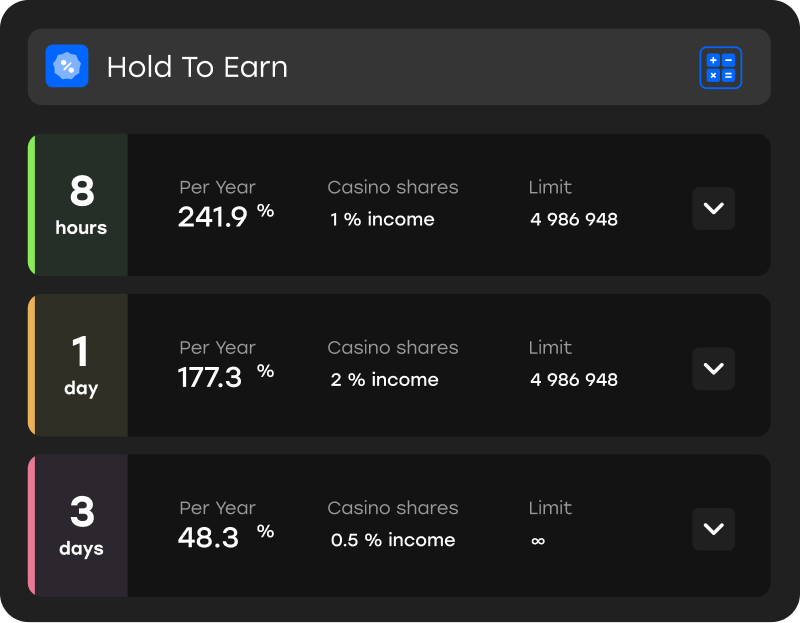Trueplay provides a loyalty program bundle that enables iGaming businesses to keep players engaged long-term from the first visit and hit of the Play button. Meet Play to Earn and Hold to Earn!
When asked to explain the mechanics of these two features, I decided to choose the banking analogy. Play to Earn works like cashback, and Hold to Earn is similar to a deposit.
Players get reward tokens each time they place a bet, no matter if they win or lose. So, the more players bet, the more tokens they receive in their wallets.
The feature works this way:
The reward is a small percentage of the bet and is flexible. Casinos can adjust it for a specific game based on their needs. For example, they can offer a higher percentage for newly launched or underperforming games to drive player engagement. Conversely, a lower reward percentage may be set for popular games to protect the platform’s profit margins. Players already enjoy the title, so a smaller reward would be unlikely to deter participation. It’s also feasible to introduce a smaller percentage for games with frequent and substantial perks like free spins or deposit bonuses. Keeping things in balance is essential, right?
Metrics you can improve with Play to Earn:
Play to Earn is a win-win: users see how their gameplay leads to rewards, while operators have a straightforward loyalty program that allows them to control reward distribution based on financial performance and player behavior.
Hold to Earn allows players to lock tokens they deposited and accrued through Play to Earn and get them back sometime after with an interest that depends on the operator’s revenue.
There are three default holding periods: eight hours, one day, and three days, but one can adjust the number of periods and their duration if needed.

Each period differs in profitability: yearly profit and the share of casino income one can receive. The longer the holding period, the bigger the potential returns. iGaming brands can choose the percentage they are willing to share with their players and set a limit on the number of tokens in their reward fund. Like in video games, subsequent token freezing periods (one and three days) are unlocked when the player reaches a certain threshold in terms of deposited funds, bets, and generated Play to Earn tokens.
Rewards are tied to the casino’s Gross Gaming Revenue (GGR). When the platform generates revenue during the holding period, a portion of that revenue is shared among all participants based on the number of tokens each player has frozen. If there is no revenue during that time, users get their tokens back without interest, but don’t lose anything.
Benefits of introducing Hold to Earn:
Hold to Earn appeals to players’ desire for ownership and passive income. Many log in just to check their earnings — and often end up playing again. Players are having fun, while businesses benefit from increased user activity — visits, deposits, bets, and token holds. Tokens remain circulating in the casino ecosystem.
In 2024, our analytics and product teams released a study whose aim was to assess the impact of Play to Earn and Hold to Earn on player behavior and operators’ financial performance. Based on data from over 1 million casino players across 196 countries, the study revealed that brands whose players interacted with these loyalty programs saw, in particular:
Want to see loyalty programs driving ongoing player engagement in your casino? Let’s talk.
